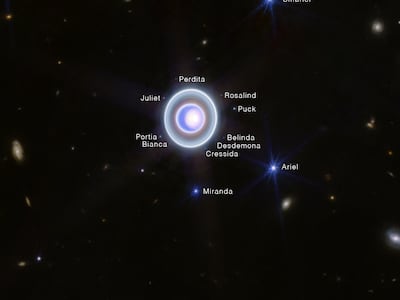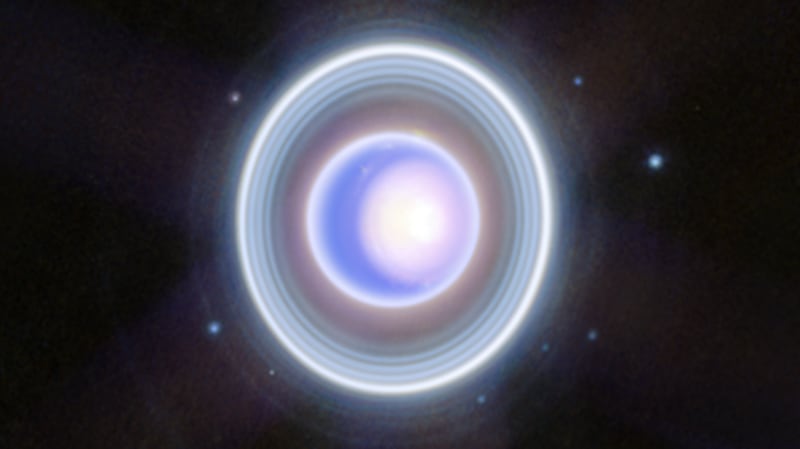The James Webb Space Telescope has captured a dazzling new image of Uranus showing the planet's rings shining bright.
The series of striking pictures released this week also put the planet's 27 known moons, including some within its glowing rings, into sharp focus.
The $10 billion space observatory has taken photos of the ice giant before but the recent ones show more details of the planet's seasonal north polar cloud cap.
“Nasa’s James Webb Space Telescope recently trained its sights on unusual and enigmatic Uranus, an ice giant that spins on its side,” the US space agency said.
“With its exquisite sensitivity, Webb captured Uranus’ dim inner and outer rings, including the elusive Zeta ring – the extremely faint and diffuse ring closest to the planet.”

Uranus appears blue-green in colour because of large amounts of methane, which absorbs red light and reflects blues back into space.
The atmosphere is mostly hydrogen and helium, but also includes large amounts of water, ammonia and methane.
Webb's images of the planet show several bright storms near and below the southern border of the polar cap.
“The polar cap appears to become more prominent when the planet’s pole begins to point towards the Sun, as it approaches solstice and receives more sunlight,” said Nasa.
“Uranus reaches its next solstice in 2028, and astronomers are eager to watch any possible changes in the structure of these features.
“Webb will help disentangle the seasonal and meteorological effects that influence Uranus’s storms, which is critical to help astronomers understand the planet’s complex atmosphere.”
Studying the mysterious planet could help scientists research planets that are outside of the Solar System, known as exoplanets.
It would help astronomers understand how planets of this size work, their meteorology and how they are formed.
The James Webb Space Telescope was launched on Christmas Day, 2021, to help reveal secrets of the universe and how it was formed.
The first image from it was revealed by US President Joe Biden in July 2022. It showed the galaxy cluster SMACS 0723 as it was 4.6 billion years ago.
Researchers have also been using the telescope to learn more about the Solar System and its planets.






